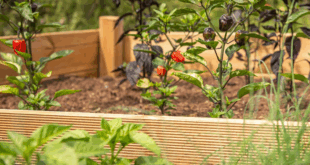The gravel path is a popular type of path for creating a passage through your garden into your home. It’s easy to lay and doesn’t fall victim to the ravages of hot and cold weather. To plan a safe gravel path, it’s necessary to choose the correct aggregate shape and size. It’s also important to prevent problems like movement, erosion and pot holes.
Mixture
Consider including a mixture of gravels to form a stable base. Some of the more decorative gravels, such as crag and red shale, are liable to potholing and movement over time. The chaotic weather in the UK can manipulate the layers and cause holes and hills to form. This quickly causes a trip hazard.
Mixing a solution of gravels is an ideal option. Think of what they do on the roads. They use crushed stones (similar to gravel) and mix it with tar to create more long-lasting tarmac. You could make sure you have a stable base by doing something similar and compacting them together with a mechanical roller or driving a vehicle back and forth over it.
If you’re building on clay soil, the base should already be solid enough. It’s only when you build on soft soil or sand you’ll need some sort of bedding in place.
The type of mix you use depends on your garden, your needs, and the sort of budget you’re working to.
Gap
For the safest path, it should have enough room for at least two people walking side by side. It should also have wheelchair and pram access. Traverse the shortest distance from gate to door. It’s simple to add an extra passage to meander around the garden for a more scenic route later on.
Use a measuring stick and estimate how much space this will take up. Mark it out with a piece of string and test it to see if it’s too big or too small.
Aggregate Size and Depth
Gravel serves as a loose surface for a garden path. Gravel under 6mm in diameter isn’t suitable. It acts too much like grit and is easily disturbed in bad weather. Elderly and vulnerable people risk being injured by any movement in the depth. Likewise, anything above 20mm in size makes it more difficult to walk on. Large slate, for example, would be too big. In rain or snow it could become very slippery and easily cause an accident.
Peagravel between 5-10mm is a common and safe dressing option for a garden path. It’s tightly packed and offers an even surface. Self-binding gravel is another good option as it binds together using the powders to make a hard surface, although it isn’t aesthetically appealing.
Typically, it’s recommended to aim for a depth of roughly double the diameter of the gravel used. A 12mm piece of gravel warrants a depth of between 23-26mm. Make it too shallow and scuffs will unveil the dressing below. Too deep and it creates an unsafe and unstable surface.
Edging
You may also want to consider edging the path. This will not only add to the attractiveness of the path but will also help to keep the gravel in situ. A decorative edging can transform a simple gravel path into a real garden feature.
Electricity and Water
Before attempting to build your garden path, get in touch with your electricity and water providers. Check with them where the pipes and wires are. If they’re directly under where you want to build, you’ll need professional advice to avoid causing some serious damage.
 Gardeners Club The Gardeners Club is a free to join online club for everyone with an interest in gardening and gardens.
Gardeners Club The Gardeners Club is a free to join online club for everyone with an interest in gardening and gardens.






